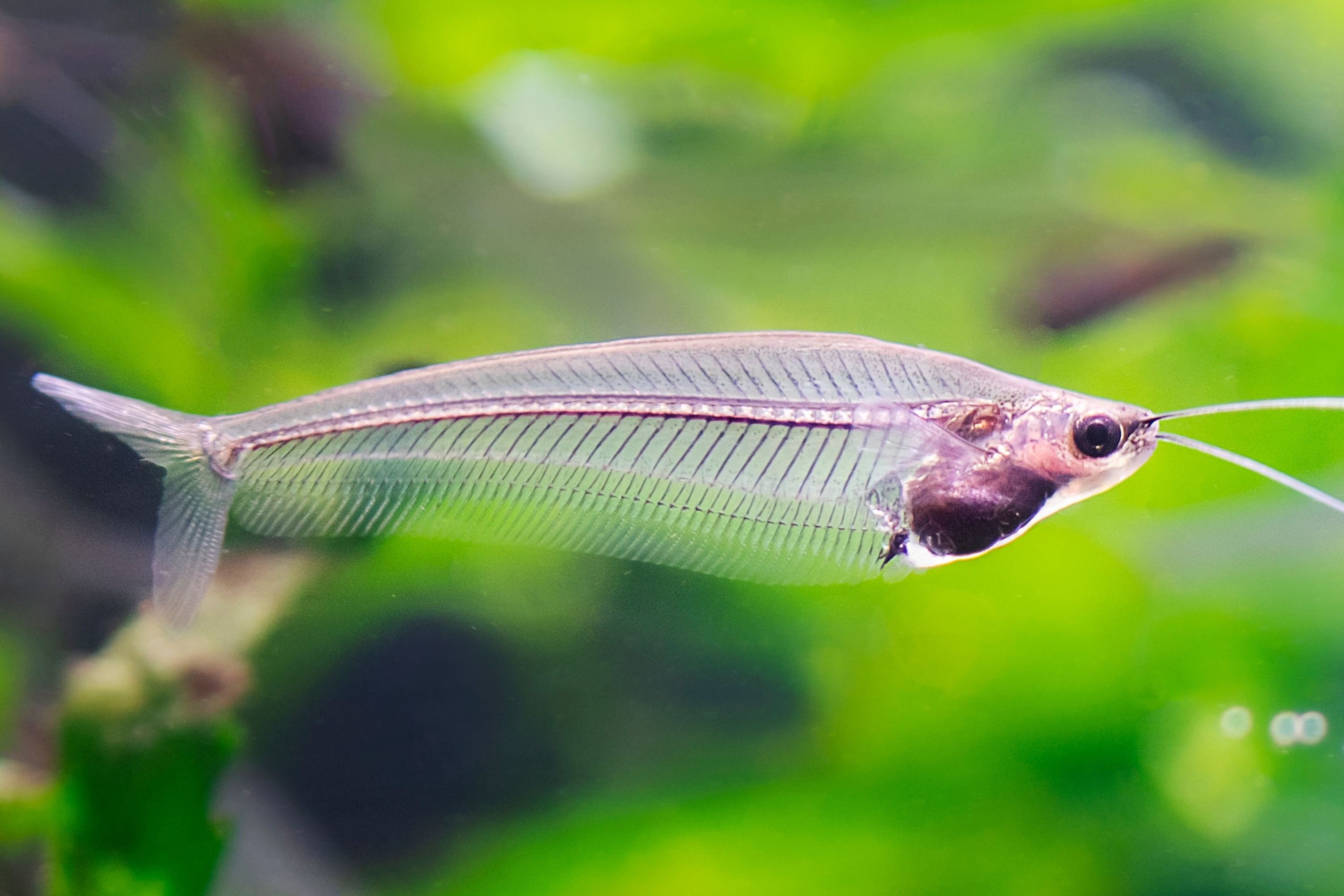Ghost Catfish
(Kryptopterus vitreolus)

Description
Kryptopterus vitreolus, known in the aquarium trade traditionally as the glass catfish and also as the ghost catfish or phantom catfish, is a small species of Asian glass catfish. It is commonly seen in the freshwater aquarium trade, but its taxonomy is confusing and was only fully resolved in 2013. It is endemic to Thailand, and found in rivers south of the Isthmus of Kra that drain into the Gulf of Thailand and river basins in the Cardamom Mountains. Until 1989, it was considered to be the same as the "glass catfish" Kryptopterus bicirrhis, a larger species infrequently seen in the aquarium trade. Subsequently, the ghost catfish commonly seen in the aquarium trade was believed to be the same as K. minor, but in 2013 it was established that the aquarium specimens actually represented another species, which was described as K. vitreolus. The true K. minor, which is restricted to Borneo, has rarely (if ever) entered the aquarium trade. This is a transparent freshwater catfish with two long barbels. Standard lengths may range up to 8 cm (3.1 in), but usually only reach around 6.5 cm (2.6 in) in total length. They are transparent because, like all catfish, they are scaleless, and catfish within the genus Kryptopterus lack body pigment. Most of their organs are located near the head; with a magnifying glass, their heart can be seen beating. When the light strikes the fish just right, it can create an iridescent rainbow color. During strong illness and after death, they turn milky white. The scientific species name vitreolus is derived from the Latin vitreus, which means glass. Among described species of Kryptopterus, only two other species, K. minor and K. piperatus, have clearly transparent bodies and both these are largely if not entirely absent from the aquarium trade. The body of others, including K. bicirrhis, are only somewhat translucent or opaque. Native to rivers in Thailand, ghost catfish prefer tanks with open swimming areas with a moderate current and planted areas that provide shelter. Due to their timid and non-aggressive nature, they should always be kept in a group of at least five; they can be kept with other fish species of similar size and temperament. Ghost catfish are highly sensitive to changes in water quality and pH. The pH should be slightly acidic (around 6.5), water hardness should be low (less than 20, ideally less than 10 °dGH) and the water temperature should be around 25 °C (77 °F).
Taxonomic tree:







